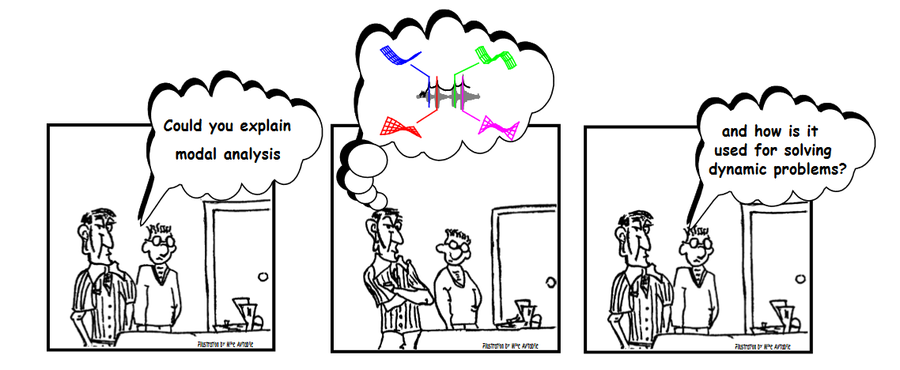Difference between revisions of "Modal Theorical FAQ"
| Line 41: | Line 41: | ||
[https://orossas.sharepoint.com/:b:/g/support/EamEoIefNl5Pg0zVmkDUv_4Bh3TXKPJz991K65nXTbuxdg?e=3KQWga I'am still overwhelmed by all this modal stuffLaplace, Fourier, FRFs, and all that!] | [https://orossas.sharepoint.com/:b:/g/support/EamEoIefNl5Pg0zVmkDUv_4Bh3TXKPJz991K65nXTbuxdg?e=3KQWga I'am still overwhelmed by all this modal stuffLaplace, Fourier, FRFs, and all that!] | ||
[https://orossas.sharepoint.com/:b:/g/support/EWVXgK-KbPBLn3VMLviBuuQB7XgfOpaAPUzLPe0dbMhe9A?e=AVixDw I showed some mode shapes to someone. They asked me if the structural design was ok. What should I tell them ?] | |||
[https://orossas.sharepoint.com/:b:/g/support/ETt1D-Wue5BBvDzO5y8GwwgBJGvPz-mNmEBZYT-ifPOK9Q?e=nfQafc Does it make any sense to use the actual operating loadsas the excitation force for a modal testif the force is a random signal ?] | |||
[https://orossas.sharepoint.com/:b:/g/support/EUw3GiSkKIdBmFAZLE5vw-IBZ6-2-Yczz7zz4i3cTda2iQ?e=btozQG Which window is most appropriate for the various types of modal tests performed?] | |||
[https://orossas.sharepoint.com/:b:/g/support/EQJYwQLkKa9Dp1k-gqlMWlwBJ4wmLrIZyuex9aeee5ftyA?e=cw1KIp Why is calibration and mode shape scaling important?And does it make a difference?] | |||
[https://orossas.sharepoint.com/:b:/g/support/EZfWJLtRuCtDpCkrd09zwEUBz2GXFlFjmWmBjBPJ7O1igw?e=o5c75e We talked about the number of points needed for a modal test before.] | |||
feb05 | |||
Revision as of 14:11, 17 July 2020
When impact testing, can the use of the exponential window cause any problems?
What's the difference between a complex mode and a real normal mode?
Is it really necessary to reject a double impact?
Do I need to have an accelerometer mounted in the X, Y and Z directions to do a modal test?
Could you explain the difference between time domain, frequency domain and modal space?
Could you explain the difference between time domain, frequency domain and modal space?
I still don't understand curvefitting ...
Someone told me SDM will never work
Is there any real advantage to MIMO testing? Why not just use SISO and then move the shaker?
I ran a modal test on a portion of a structure of concern and many modes look the same!
Is there a difference between a roving hammer and roving accelerometer test?
Are you sure you can get mode shapes from one row or column of the H matrix?
I hear about SVD all the time Could you explain it simply to me?
What's the difference between local and global curvefitting ?
Which shaker excitation is best? Is there any difference?
I'am still overwhelmed by all this modal stuffLaplace, Fourier, FRFs, and all that!
Which window is most appropriate for the various types of modal tests performed?
Why is calibration and mode shape scaling important?And does it make a difference?
We talked about the number of points needed for a modal test before. feb05
